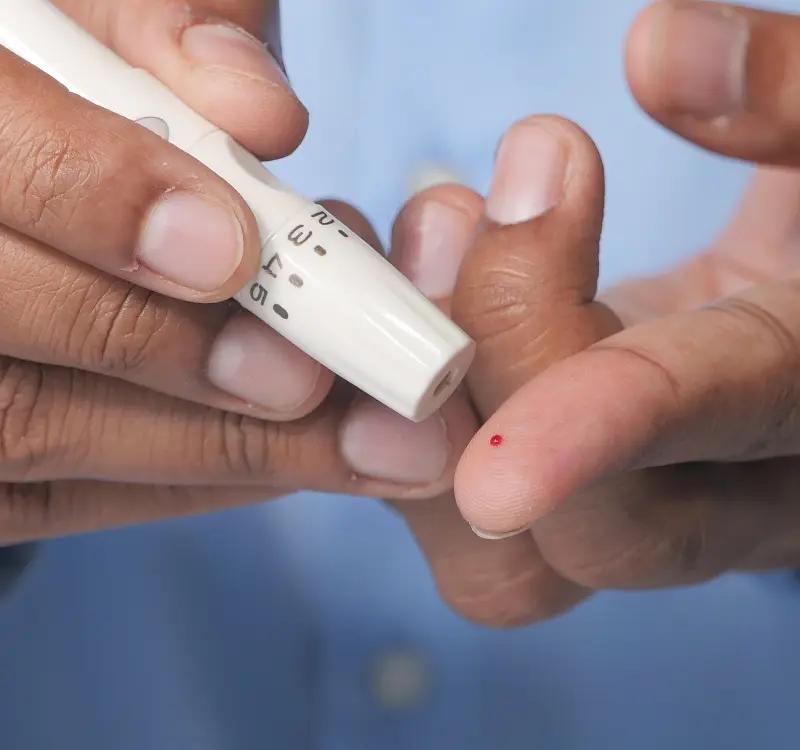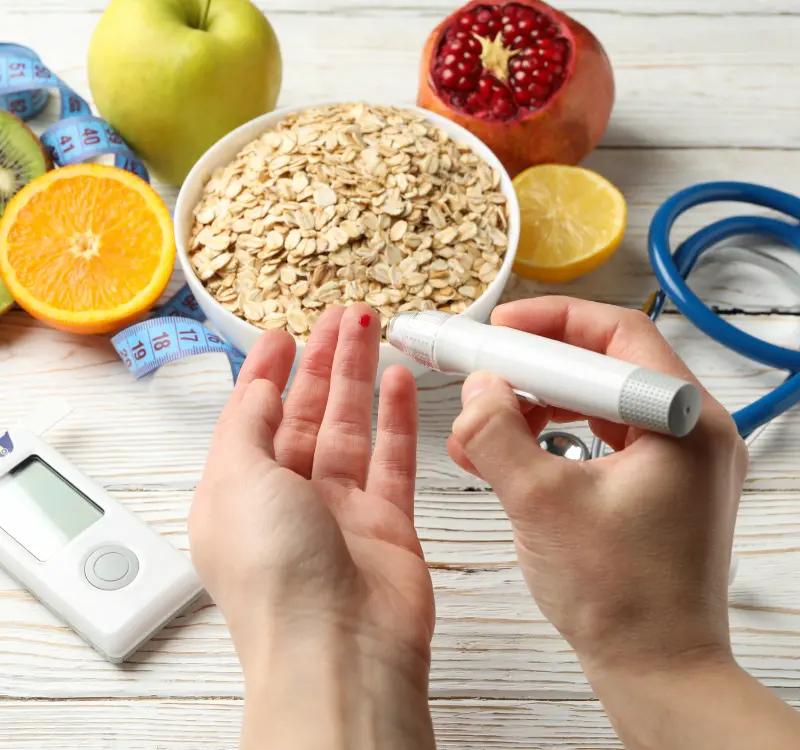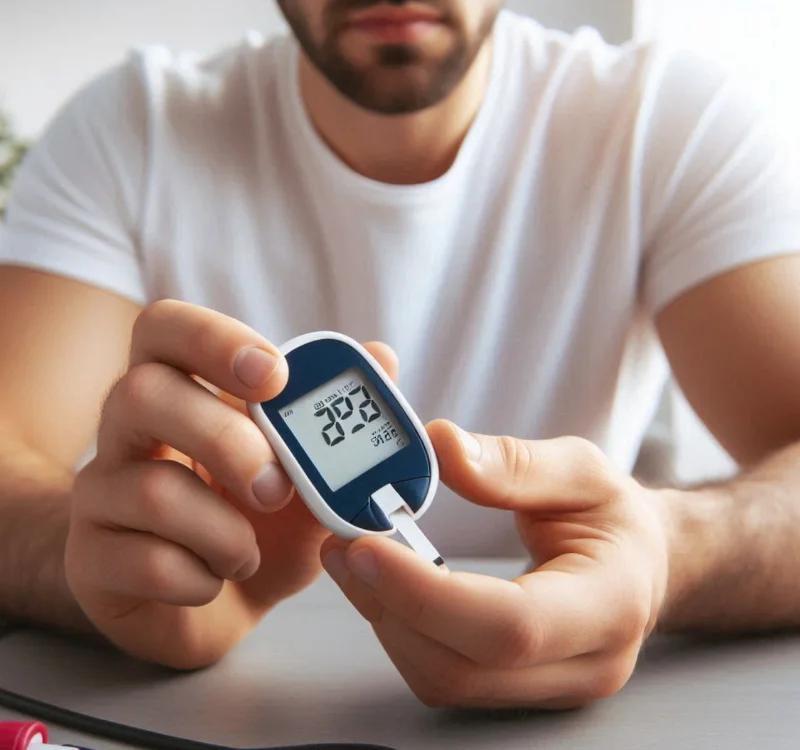Discover the Types of Blood Sugar Tests You Need to Know
Aug 26, 2024

Balancing sugar levels in the blood is very important to everyone, for persons with diabetes and those with a higher probability of developing the disease. Monitoring blood glucose is essential for effectively managing this process. These tests help detect any deviations from normal glucose levels in the body. By identifying these changes, you can plan and take the appropriate actions needed to maintain proper glucose control and overall health.
Table of Contents:
- What is a Blood Sugar Test?
- Types of Blood Sugar Test.
- What Happens During a Blood Glucose Test?
- How to Control Blood Sugar Levels?
- Conclusion.
- FAQs.
What is a Blood Sugar Test?
A blood sugar test can also be referred to as an inexpensive and straightforward means of checking the amount of glucose that is present in the blood. Glucose is a form of sugar that helps your cells get energy. However, if the concentration of glucose is too high or too low, then there can be complications, for example, diabetes or hypoglycemia. Testing is arranged to give an idea of how well your body is taking glucose and keeping it within a healthy range.
Types of Blood Sugar Test
1. Fasting Blood Sugar Test: The fasting blood sugar test takes your blood sugar level after you have gone without food for not less than 8 hours, usually a night. This test, therefore, gives an average measure of the blood sugar level in your body with consideration of foods ingested within a short period.
2. Postprandial Blood Sugar Test: Postprandial blood sugar test is done 1-2 hrs after taking a meal or consuming food. it measures how efficiently your body regulates glucose from food and controls high levels of blood sugar after meals.
3. Random Blood Sugar Test: The random blood sugar test can be taken at any time with no regard to the last meal that one has taken. It is of diagnostic utility when the signs are suggestive of diabetes, or as a checkup of your current blood sugar status.
4. HbA1c Test: The HbA1c test gives a picture of the average blood sugar levels prevailing over 2-3 months. A blood sugar log gives a broad look at the amount of glucose in your bloodstream and how a diabetes treatment plan is working.
What Happens During a Blood Glucose Test?
1. Fasting Blood Sugar Test: You’ll fast overnight, and then a healthcare provider will draw blood from a vein in your arm. The sample is sent to a lab to measure your blood sugar level.
2. Postprandial Blood Sugar Test: After eating, a blood sample is taken from your fingertip or vein. This test helps to understand how your body handles glucose from meals.
3. Random Blood Sugar Test: A blood sample is taken at any time. This can be done with a quick fingerstick or a venipuncture, providing immediate blood sugar readings.
4. HbA1c Test: A blood sample, usually from your arm, is analyzed to determine your average blood sugar levels over several months. This test helps gauge long-term blood sugar control.
How to Control Blood Sugar Levels?
1. Healthy Eating: Start consuming a variety of foods, including fruits, vegetables, whole grains, and lean proteins. This helps in stabilizing your blood sugar levels and it also helps in providing essential nutrients to your body.
2. Regular Exercise: Engage in regular activities like walking, jogging, or cycling. Exercise helps lower blood sugar by increasing insulin sensitivity and promoting glucose use in muscles.
3. Monitoring Blood Sugar: Use a glucose meter to check your blood sugar levels regularly. Monitoring helps you understand how different foods, activities, and medications affect your glucose levels.
4. Medications: If lifestyle changes aren’t enough, medications or insulin might be prescribed by your doctor. These help to manage blood sugar levels more effectively and prevent complications.
5. Stress Management: High stress can raise blood sugar levels. Techniques like deep breathing, meditation, or yoga can help reduce stress and improve blood sugar control.
6. Adequate Sleep: You should have 7-9 hours of quality sleep each night. Poor sleep can affect hormone levels and blood sugar control, so maintaining good sleep hygiene is essential for overall health.
Conclusion
When managing diabetes or monitoring blood sugar levels, having the right tools is essential. A blood sugar test machine is a vital device for checking your glucose levels at home. Different types of blood sugar tests can be performed using this machine, including the blood sugar PP test, which measures glucose levels after eating. To effectively use these tests, you’ll need a blood sugar test kit that includes everything required for accurate measurement. While a blood sugar test machine can be a significant investment, the blood sugar test cost varies depending on the type and brand, but it is crucial for maintaining your health.
Frequently Asked Questions
Signs of high blood sugar include frequent urination, excessive thirst, fatigue, blurred vision, and unexplained weight loss. Consult a healthcare professional if you experience these symptoms.
Yes, a blood sugar level of 240 mg/dL after eating is high.
A blood sugar level of 250 mg/dL after a meal is high. Consult a healthcare professional for advice.
A blood sugar level of 200 mg/dL or higher two hours after eating is considered higher than normal and may indicate diabetes or poor glucose control. Normal post-meal blood sugar levels are generally below 140 mg/dL.
To check blood sugar at home, wash your hands, insert a test strip into your glucose meter, prick your fingertip with a lancing device, apply a drop of blood to the strip, and read the result on the meter.
The fasting blood glucose test confirms blood sugar levels. The A1C test also provides an average of blood sugar levels over the past few months.
The normal range for blood sugar is typically 70-99 mg/dL when fasting.















